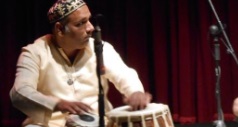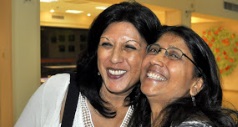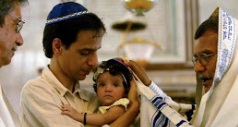BETH EL SYNAGOGUE (1896, but much altered in recent years)
909, Mahatma Gandhi (M. G.) Road
Panvel
Raigad District/Konkan Coast
Maharashtra, INDIA
This Konkan Region synagogue, the nearest to Mumbai (Panvel is considered the gateway to the Raigad District), is operational with a small yet active congregation made up of some sixty-five members. An unarranged, on-the-spot visit to Beth El is fairly easy since a caretaker or another synagogue affiliate is regularly at the property. The Mumbai police are also regularly on guard at the site for security purpose, yet they don’t provide access into the building. The synagogue contact number is (0091) 22.745.1014. Panvel can be visited from Mumbai in one day, yet for an overnight trip to more Konkan Region synagogues it is best to hire a car and driver from Mumbai for at least two days. A stay at the comfortable Radisson Hotel on Alibag-Pen Road, Gondhalpada, Varasoli, Alibag, Raigad while doing this tour.
Beth El (Hebrew for House of God) is one of the oldest Bene Israel congregations in the Raigad District within the Konkan Region of coastal Maharashtra. The building, located in the center of the town of Panvel on busy M. G. Road, was paid for through member subscription and dedicated on the Jewish holiday of Shavuot in July 1849. The synagogue building and a high wall abuts the road without dedicated sidewalks, and an entry gate with a pair of painted blue metal doors open onto the synagogue property. Here one transitions from the crowded outside to the calmer inside. Just inside the gateway is a small covered porch with benches, which runs along the short, east end of the building. Doors at this small porch open into the sanctuary. Adjacent to the property gate and in front of the building’s porch is an exterior stair that leads up to a pair of doors providing access to the upper level. These doors open into a women’s gallery along the east elevation of the synagogue. Covering the entire court along the synagogue’s east elevation is today a lean-to roof that is supported by slender metal columns. Beth El’s other short elevation features an apse containing the heckal, or ark. The heckal is located along the west side of the building, which is the one closest to Jerusalem as is traditional. Today a mid-rise apartment building nearly abuts the west side of the synagogue.
Beth El is a low-slung, relatively small structure typical to this period in this region of India. It was originally constructed of simple brick veneered in painted chunam (polished lime) walls, yet in recent years the chunam walls were altered when they were veneered in textured natural stone tiles. Hence the architecture of the 19th century building was compromised. Placed along the walls of the synagogues are large rectangular casement windows set in arched openings. Also changed from the original design was the addition of five painted (blue) steel columns flanking the windows. These new columns support the altered roof with its deep eaves in response to the monsoon climate. The hipped roof is covered by flat ceramic tiles that replaced similar ones on the original building. Along all sides of the building were once corner and wall pilasters, a plain entablature, and bands of trim surrounding the windows and clerestories. Separating the clerestories and windows were small bracketed over-panels or canopies. These design features too were eliminated or changed in recent years.
Surrounding the synagogue building proper and bordering the property lines, are various secondary structures and spaces. These spaces include office and meeting rooms, toilets, storerooms, a kitchen, caretaker’s apartment, and a mikveh (ritual bath). A paved court separates these support spaces from the sanctuary building.
The rectangular sanctuary follows the planning of other Bene Israel synagogues with a centrally-positioned raised tebah (bimah), or an area containing a reader’s platform from where the Torah is read), and engaged to the far (west) wall is the heckal (ark). The tebah is constructed out locally-grown teak and is original. Its design includes raised panels at its base, turned newel posts and balusters, and a shaped handrail. Projecting from the corners of the tebah were originally decorative brass fixtures and rods, yet these have been replaced by more recent lights. Placed in the center of the western elevation that is closest to Jerusalem as traditional, the heckal is a locally-crafted and beautifully caved teak cabinet that is draped by a cloth called a parochet. The heckal, as per synagogue tradition, is raised off the floor by a few marble steps.
Beth El’s sanctuary features include light gray floor pavers that once also ran along the lower walls as a wainscot. This wainscot and the white chunam walls were altered in recent years, and today the entire walls are veneered in light gray marble tiles. Along the walls of the sanctuary are wall sconces, framed Hebrew prayer verses, and large casement windows (replacing the original wooden ones with transoms with stained glass and clerestory casement units). Fixed metal grilles at the windows that at one time had been added were removed at some more recent point. The trim that once surrounded the windows was intricate, as was the panels below some of the windows. This now-missing cusped design had been influenced by traditional Indian architecture.
The original flat painted wood ceiling with applied trim and a Magen David (Star of David) in the center was likewise replaced in recent years by smooth white Masonite panels, constituting another significant compromise to the 19th-century architecture. Still hanging from the ceiling, however, are a variety of fans, glass lanterns, and brass and other metal lighting fixtures. Such fixtures are typical to all Indian synagogues. Other architectural and liturgical design features include the freestanding wooden benches around of the sanctuary and the matching pair of draped (red) chairs adjacent to the heckal. The chairs are dedicated to Elijah and used for the circumcision ceremony. A red runner today leads to the tebah, the tebah and its stairs are also carpeted in red, and there is a small oriental carpet in front of the heckal. Overlooking the sanctuary space (where the men gather) is the women’s gallery. Beth El’s sanctuary is today air conditioned by window units, an anomaly for Indian synagogues.
Attached to Beth El is a narrative that involves matters of fortune and luck. It is believed that anyone who visits and prayers in the synagogue, regardless of their faith or background, will be blessed with good actions, wellness, happiness, and a promising future.
Oral Bene Israel tradition tells us that they were traders from the Middle East who conducted business in India as far back as ancient times. Eventually they settled – perhaps more than two millennia ago in a collection of small towns and villages in the Raigad District. They lived there for centuries as a mostly isolated disaporic Jewish enclave, following various Jewish customs and lifestyle practices among larger Indian communities. Centuries later, beginning in the late seventeen hundreds but especially by the mid-1800s, many of the Bene Israel relocated to Mumbai as well as Ahmedabad, Pune, and Karachi when these cities were expanding and offering job and lifestyle opportunities. Some Bene Israel Jews chose to stay in the Konkan Region as others moved away. For those that remained here, this synagogue and others continued to remain active religious and communal centers for many more decades.
Beginning in the mid-twentieth century, as a result of political and social changes in India, the Bene Israel began to emigrate. At that point, the Bene Israel population of Bene Israel dropped from an estimated twenty thousand to a few thousand, and today the number of Jews currently living in the Raigad District is quite small. Of the thirteen synagogue buildings built in the towns and villages in this region from the mid-nineteenth to early twentieth centuries, only eleven physically survive today. Of those, only a few are active houses of prayers, others endure marginally, or have been converted to other functions. These vernacular structures, appropriately scaled and decorated for their function, served the community well for many years, and some continue to serve their congregations. They are a testament to the region diversity and to India’s tradition of tolerance.
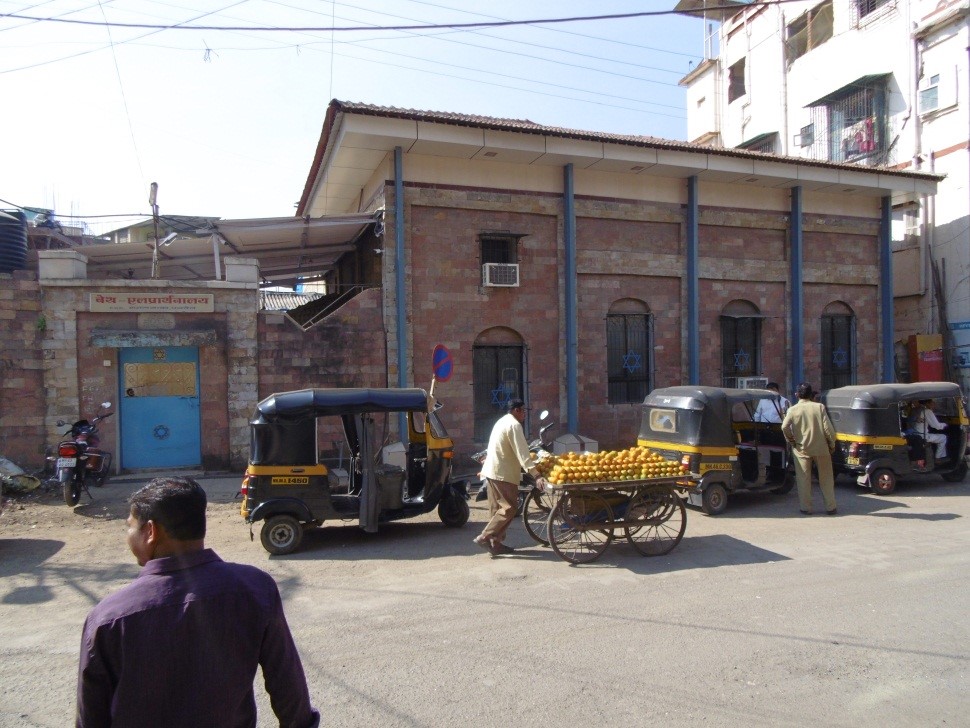
Exterior
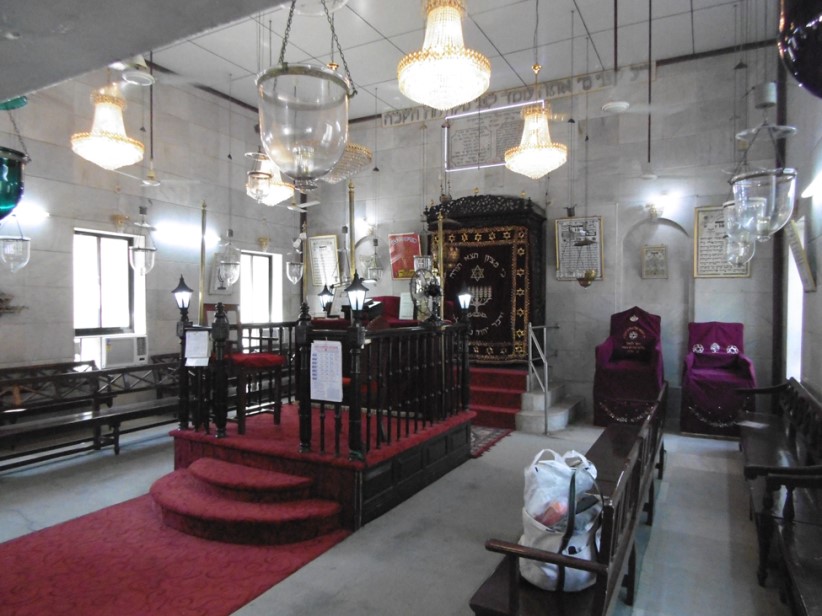
Interior

